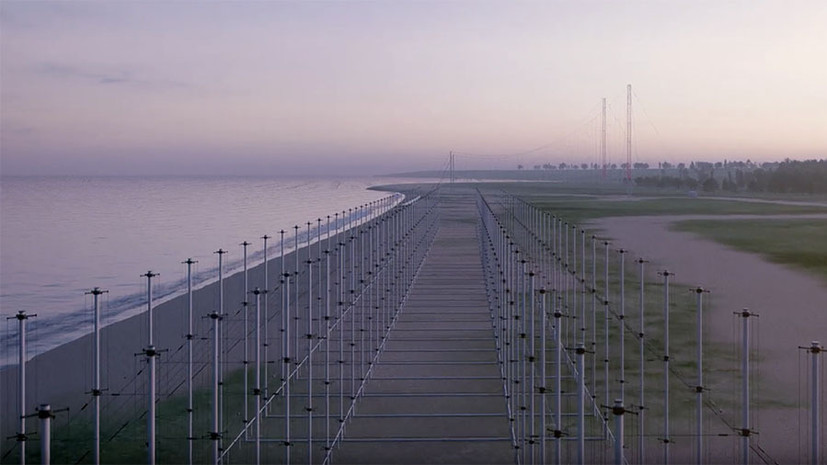Russia has deployed overseas radar "Sunflower" in the Far East and the Baltic direction. This was told by the Director General of the Scientific Research Institute for Long-Range Radio Communications (NIIDAR), which developed these stations, Kirill Makarov. Thus, now these systems work in three directions - earlier they began to function in the Caspian.
“We are building surface wave stations to detect ships and air targets. These are stations like "Sunflower". They are already in operation, they are located in three directions - in the Far East, the Caspian Sea and the Baltic. In addition, we are developing new directions - this is radio photonics and related technologies, as well as terahertz radiation, ”he said in an interview with RIA Novosti.
The Sunflower station is capable of detecting targets outside the so-called radio horizon - the maximum indicator for radars. There are two varieties of the complex - for the Russian Armed Forces and for export.
The characteristics of the Russian specification are unknown, but the NIIDAR website presents data on the export version, according to which the observation area of such a complex is 450 km and the viewing radius is 120 °. It can simultaneously accompany up to 200 surface and 100 air targets. Also, the radar is capable of detecting ships and aircraft using stealth technologies at almost the same distance as conventional ones.
In 2013, she entered the service of the Caspian Flotilla, and since then she has repeatedly participated in military exercises. And in August 2018, during the maneuvers, the flotilla forces worked out a new tactical “Wall” technique, which allows to increase the target detection zone.
“A special system for building ships and aircraft of reconnaissance and fighter aircraft, coupled with the capabilities of coastal assets of the Podsolnuh-E surface-wave radar station and Buk-M3 anti-aircraft missile systems, has significantly increased the detection range of low-flying targets,” the press director noted services of the Southern Military District Vadim Astafiev.
“Give Russia a number of key benefits”
Makarov also said that by the end of the year the enterprise will transfer to the Armed Forces of the Russian Federation the first prototype of the over-the-horizon radar “Container”.
“The station uses the phenomenon of reflection of decameter wavelengths from the ionosphere. But this radar has a so-called dead zone. It is 900 kilometers, so it was decided to place the station in the interior of the country. This allows the station to be safe and to control the airspace of neighboring states, ”he explained.
Makarov also reported on work on systems that will be able to detect plastic or wooden UAVs.
“Any material has an effective dispersion surface, even if it is wooden, even plastic. What we are doing will allow us to detect such drones as well, ”said Makarov.
These developments allow creating an effective system of aerospace defense, Igor Korotchenko, editor-in-chief of the National Defense magazine, is convinced.
“All these developments are aimed at creating a reliable system of aerospace defense of Russia. Of course, the primary information is radar data. Therefore, new developments in the field of radar provide Russia with a number of key advantages in the early detection of possible missile and unmanned attacks with targeting air defense means to defeat them, ”he told RT.
According to Korotchenko, the defense system of the Russian air base in Syrian Khmeimim works on these principles. Note that this object was repeatedly attacked by fighters using improvised UAVs. In total, over the past two years, Russian air defense shot down 118 drones, noted in September an official spokesman for the Russian Defense Ministry, Major General Igor Konashenkov.
“Terrorists are trying to break through the air defense system of the Khmeimim air base. Speaking of numbers, 118 unmanned aerial vehicles of terrorist groups were destroyed in two years, including 58 drones from January 1 of this year, ”he said.
Korotchenko emphasized that some Russian air defense systems can also play the role of radar stations, detecting targets and immediately destroying them.
“Therefore, today we are at the forefront of both the means of radar and anti-aircraft missile systems. And the new data confirms that this work is carried out systematically, consistently and purposefully, ”the analyst said.

